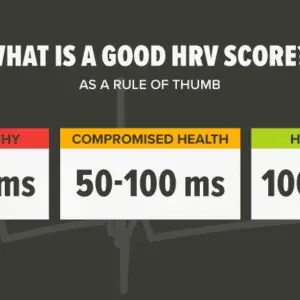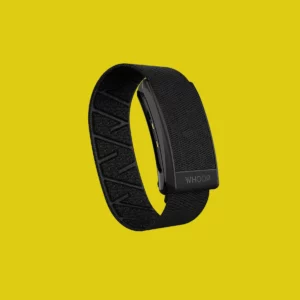
Since the creation of washers, top-loaders have existed. They are the time-tested washers that have been effectively cleaning clothes for at least a century. Although front-load washers have been around for a while, it has only been within the last 20 years or so that the general public has had access to home versions of these recognizable laundromat washers.
We’ll discuss typical cycle times, the reasons behind why cycle times have increased over time, how to ensure you aren’t unintentionally damaging your washer, and why you shouldn’t run a Quick Wash cycle for every load. Keep reading to know more about your top loader washers.
Washing Period
A top-load washer will almost always finish a load of laundry faster than a front-load washer.
The top-load washer’s constant immersion and soaking in water is the cause.
Clothes are cycled in and out of the water because front-load washers are not as fully stocked.
It takes more time to get them clean with less soaking time.
Although they can all clean clothes, front-load washers perform the best in terms of cleaning.
Spinning Cycle
Spin cycles for top-load and front-load washers are comparable to one another.
A front-load washer, on the other hand, spins more than one-third faster than a top-load washer, which results in more water being removed from the fabric.
This results in dryer drying times that are reduced.
Dishwasher Presets
The majority of front-load washers have several settings for various types of fabric.
Rarely, if ever, do top-load washers have additional settings.
As a result, a front-load washer can extend a wash cycle by up to 30 minutes or more when using a special setting.
A front-load washer will be more cost-effective to operate than a top-load washer even when washing for a longer period.
How long does it take a front-loading washer to complete a load?
- Ten years ago, the typical cycle time was 99 minutes.
- Today’s typical cycle time is 144 minutes.
- Our test’s longest cycle time was 278 minutes.
- In our tests, the shortest cycle time was 71 minutes.
As water efficiency increases, front loader cycle times lengthen. A cycle on one of the machines we tested took an astounding 4 hours, 38 minutes!
However, its running costs are quite high, and according to the registration data, a full capacity load (our test load is only 3.5kg) takes a glacial 6 hours and 50 minutes. In fairness, your patience is rewarded with great wash performance, and it does have a quick wash option (albeit suitable only for a small, 2kg load).
This brings up another crucial point: while most people wash their clothes in one sitting at home using a 3.5kg load, the cycle times we report in our washing machine tests may double or even triple if your machine is fully stocked.
How much time does a quick or fast wash program require?
The good news is that many contemporary washing machines offer a fast or quick wash program if you’re tired of waiting for the laundry.
It’s important to note that these programs are only appropriate for very small loads—a couple of kilograms or just a handful of items at most, and only if they’re lightly soiled. Some fast wash programs take less than 15 minutes from going to whoa, so they’re great if you’re in a hurry.
The fast program will work if you spill some juice on a business shirt, but don’t expect it to remove grease from a week’s worth of mechanic’s overalls; you’ll need a more intensive program for that (and probably a pre-soaker).
Why are laundry cycle times so lengthy?
You may have wondered why washing machines these days take so long if you’ve ever been impatiently waiting hours for your clothes to finish washing.
Simply put, it comes down to modern machines being very water efficient, especially front loaders.
That benefits the environment (and your bank account) because it reduces the amount of energy needed to heat the wash water and the amount of water used overall.
However, using less water means that washing your clothes takes longer.
Top loaders use more water than front loaders, which is another reason why they have shorter cycle times.
If cycle time isn’t a problem for you or you prefer to wash during off-peak hours, the lengthening programs shouldn’t be a big deal. However, if you prefer to complete tasks in one sitting, it might be worth looking into top loaders or changing your laundry routine.
How to speed up the laundry process
If you’re anything like us, you’d prefer to spend as little time as possible doing the laundry, whether you have a fast top loader or a steady front loader.
Here’s a trick for completing the laundry quickly.
- You have the best chance of removing stains with just one wash cycle if you act quickly with a pre-treater or laundry soaker before they dry and set. This way, you won’t have to wash your clothes multiple times to get them clean.
- Use the shortest cycle that will complete the task; for example, if you only have a few T-shirts to wash, a full-length intensive program would be overkill. A shorter, more appropriate program will save you time, energy, and running costs. For suitable programs, consult your manual.
- Use the highest spin speed possible; while this won’t speed up the washing process, your clothes will dry faster because they’ll have less remaining moisture, and if you’re using a dryer, this will also save you money (though it can flatten the pile of your towels a little more).
- Use the timer; regardless of how long the wash cycle takes, by setting the timer the night before, you can schedule your laundry to finish right before you wake up in the morning, leaving it ready to hang out right away.
- Wash full loads – It makes sense that a fully loaded washing machine will take longer to complete a load than one that is only partially loaded but not twice as long.
- Therefore, try to complete all of your laundries in a single load because it will take less time and cost less to do so than to do it in two half-loads.
- Download a quicker program; some washing machines now come equipped with Wi-Fi connectivity, allowing you to update or add new wash programs.
- Examine what’s online because there might be a program that satisfies your requirements and operates faster than your default choices.
To sum up
A front-load machine is for you if you require the cleanest clothes with the least amount of drying time in the most effective package and the cost is not an issue. A top-load washer is the best option if saving time and money on laundry is your main priority.




